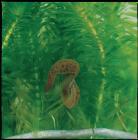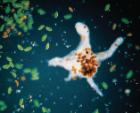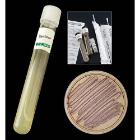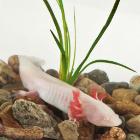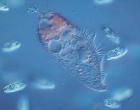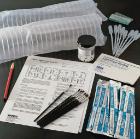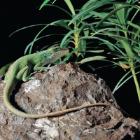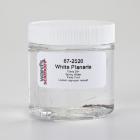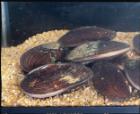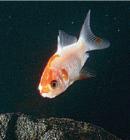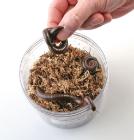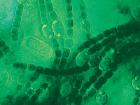You Searched For:
420 results were found
WardsSci000323
Description:
Erpobdella obscura
Catalog Number:
(470177-438)
Description:
Observe the differences between common mold types
Description:
Members of the Pelomyxa genus look very much like Amoeba. Pelomyxa, however, have many nuclei, whereas Amoeba have only one.
Description:
Hydra are tiny animals closely related to jellyfish. They can be carnivorous as well as photosyntheic due to their symbiotic relationship with green ...
Description:
This organism is commonly isolated in soil and produces antibiotics such as bacitracin, subtilisin, and mycobacillin.
Description:
These unique salamanders keep their gills and stay fully aquatic even into adulthood, making them ideal subjects for embryological and developmental s...
Catalog Number:
(470179-130)
Description:
Isolated from human intestine, this organism is known for its distinctive putrefactive odor.
Description:
Pink to bright rose color.
Characterized by cilia; nearly all possess two types of nuclei.
Catalog Number:
(470007-188)
Description:
Watch New Planaria Generate from Sectioned Parts
Catalog Number:
(470176-428)
Description:
Marine; Small Motile Cells with the Transverse Furrow Located Near the Apex.
Catalog Number:
(470176-520)
Description:
Anoles (American Chameleons) are tree-dwelling lizards found mostly in the southeastern US.
Description:
Planaria are a flatworm commonly used in science fair projects. They do not bite and move very slowly, making them easy for young students to observe.
Description:
Anodonta subobicularis.
Description:
Carassius auratus
Description:
This North American Diplopod makes a great classroom pet and can be used in behavioral studies.
Description:
Anabaena is a genus of filamentous, un-branched Cyanobacteria consisting of bead-like cells and enlarged spores or heterocysts.
Inquire for Price
Stock for this item is limited, but may be available in a warehouse close to you. Please make sure that you are logged in to the site so that available stock can be displayed. If the
Stock for this item is limited, but may be available in a warehouse close to you. Please make sure that you are logged in to the site so that available stock can be displayed. If the
This product is marked as restricted and can only be purchased by approved Shipping Accounts. To apply for a shipping account number, click here. If you need further assistance, call Customer Service at 800-962-2660 or email [email protected].
-Additional Documentation May be needed to purchase this item. A VWR representative will contact you if needed.
This product has been blocked by your organization. Please contact your purchasing department for more information.
The original product is no longer available. The replacement shown is available.
Limited quantities of this product are available. To check availability or place an order, call Customer Service at 800-962-2660 or email [email protected].
|
|||||||||





